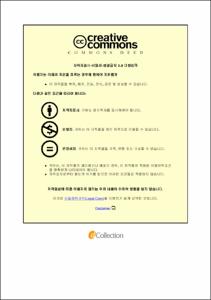Ulsan Univ. Repository
Thesis
General Graduate School
Environmental Construction Engineering
2. Theses (Ph.D)
주조공정 주물사의 순환 사용을 위한 습식재생 및 최적화
- Abstract
- 본 연구에서는 무기바인더를 포함한 폐주물사의 순환이용을 위한 최적의 습식 재생 방안을 도출하고자 하였다. 이를 위해 2종의 바인더를 포함한 폐주물사에 대한 재생 방안을 실험적으로 파악하고 폐수처리 공정을 포함한 습식 재생에 대한 총비용을 산정하여 경제성 분석을 실시하였다. 또한 본 연구에서 제안한 폐주물사의 습식 재생에 대한 환경 영향은 전과정평가를 이용하여 매립처리와 비교하였다.
Sodium silicate 기반의 무기바인더 (S 바인더)를 포함한 중자 폐사는 물을 이용해 2회 세척하면 바인더가 모두 제거되었으며, S 바인더에 계면활성제가 추가된 무기바인더 (S-S 바인더)를 포함한 중자 폐사는 수산화칼륨 용액과 물 세척 2회를 통해 바인더가 모두 제거되었다. S-S 바인더에 파우더 형태의 첨가제 (P 첨가제)가 추가된 주조 폐사는 수산화칼륨 용액과 물 세척 3회를 통해 바인더를 모두 제거하였으나, P 첨가제는 재생사 표면에 붙어 78% 잔류하였다. 재생사의 재사용 평가는 1차 재생사를 다시 폐사로 만들어 재생하고 이를 반복해 3회까지 재사용 실험을 진행하였다. 3회 재사용하더라도 재생사의 특성은 원사와 동일하게 나타나, 습식 재생 방법의 높은 효율을 확인하였다.
Scale-up 실험에서는 100 kg 용량의 재생장치와 마이크로웨이브를 이용한 건조장치를 활용하여 대량으로 폐주물사를 재생하고 중자 특성 평가를 진행하였다. 또한 재생사를 이용해 주조 성능 평가를 진행하였으며, 재생사를 2회 재사용하더라도 주조품의 품질은 원사와 유사한 특성을 보여 습식 재생 방법의 실용성을 확인하였다. 습식 재생 공정은 필연적으로 폐수가 발생하는데, 폐수처리를 위해 염화 제2철을 이용해 응집 실험을 진행하였고 응집처리를 통해 폐수에 포함된 오염물질을 제거할 수 있었다.
실험결과를 바탕으로 재생 공정과 폐수처리 공정을 포함한 습식 재생의 경제성 분석을 수행한 결과, 물리적 방법과 화학적 방법을 함께 사용하였을 때 폐사의 재생 비용은 167,200 원/톤이었다. 따라서 원사의 구매 비용과 폐사의 위탁처리 비용을 고려하면, 습식 재생 방법은 경제성이 있음을 확인하였다. 또한 폐주물사 재생의 환경영향을 전과정평가로 분석하였는데, 폐기물의 양을 줄일 수 있고 원사를 대체할 수 있는 회피 영향에 의해 폐주물사의 습식 재생은 환경친화적인 처리 방안임을 확인하였다. |This study attempts to derive an optimal wet regeneration method for circular use of waste foundry sand including inorganic binders. To this end, the regeneration method of waste foundry sand using two types of binders was experimentally identified, and the total cost of the wet regeneration including wastewater treatment process was calculated to analyze the economic feasibility. In addition, the environmental impacts of the wet regeneration of waste foundry sand proposed in this study were compared with landfill treatment by using a life cycle assessment.
All of the binders were removed by washing twice with water for the molding sand containing the sodium-based inorganic binder (S binder). S-S binder in the molding sand, with surfactant added to S binder, was cleaned by a potassium hydroxide solution and twice water cleaning. S-S binder in the casting sand, with powder type additives (P additives), was removed by washing a potassium hydroxide solution and trice water cleaning, while the P additives remained 78% adhering to the surface of regenerated sand. To evaluate the reuse of regenerated sand, the primary waste sand was regenerated and recycled, and the reuse experiment was conducted up to three times. Even if reused three times, the characteristics of the regenerated sand appeared the same as those of the new sand, confirming the high efficiency of the wet regeneration method.
In the scale-up experiments, the regeneration machine of 100 kg capacity and the microwave dry machine were utilized to regenerate waste sand in large quantities and evaluate the properties of regenerated sand. In addition, the casting performance were conducted using regenerated sand and even if the regenerated sand was reused twice, the quality of the casting was similar to that of the new sand, confirming the practicality of the wet regeneration method. The wet regeneration process inevitably generates wastewater, and a coagulation experiment for wastewater treatment was conducted using the iron chloride, and pollutants contained in wastewater could be removed through the coagulation treatment.
Based on the experimental results, an economic analysis of wet regeneration including the regeneration process and wastewater treatment process was conducted. When the physical and chemical methods were used together, the recycling cost of waste sand was 167,200 won/ton. Therefore, considering the purchase cost of new sand and the cost of consignment treatment of waste sand, it was confirmed that the wet regeneration method is economical. In addition, the environmental impact of waste sand regeneration was analyzed through life cycle assessment, and it was confirmed that it is an environmentally friendly treatment method through wet regeneration of waste sand due to the avoidance effect that can reduce the amount of waste and replace new sand.
- Issued Date
- 2021
- Awarded Date
- 2021-02
- Type
- Dissertation
- Alternative Author(s)
- Kyeong Ho, Kim
- Affiliation
- 울산대학교
- Department
- 일반대학원 건설환경공학과
- Advisor
- 박흥석
- Degree
- Doctor
- Publisher
- 울산대학교 일반대학원 건설환경공학과
- Language
- kor
- Appears in Collections:
- Environmental Construction Engineering > 2. Theses (Ph.D)
- 파일 목록
-
-
Download
 200000373316.pdf
기타 데이터 / 14.45 MB / Adobe PDF
200000373316.pdf
기타 데이터 / 14.45 MB / Adobe PDF
-
Items in Repository are protected by copyright, with all rights reserved, unless otherwise indicated.